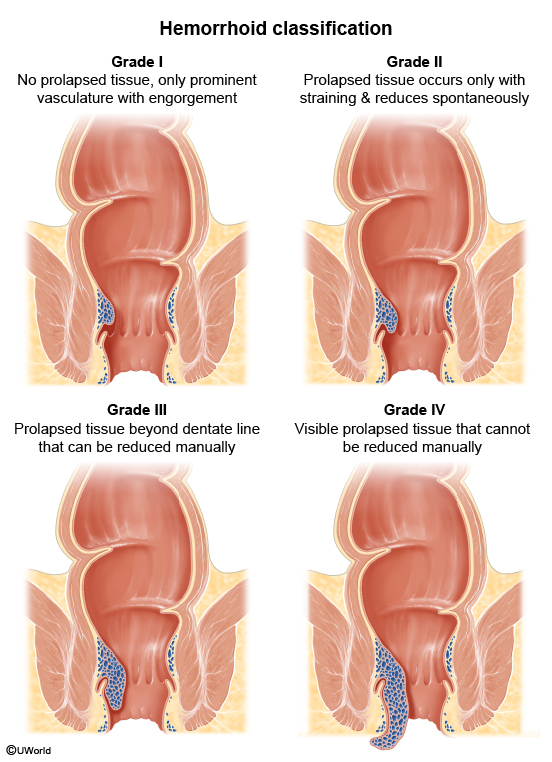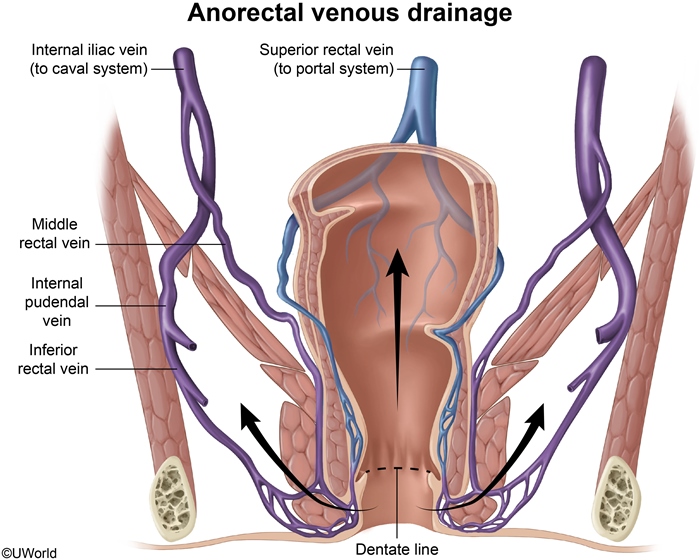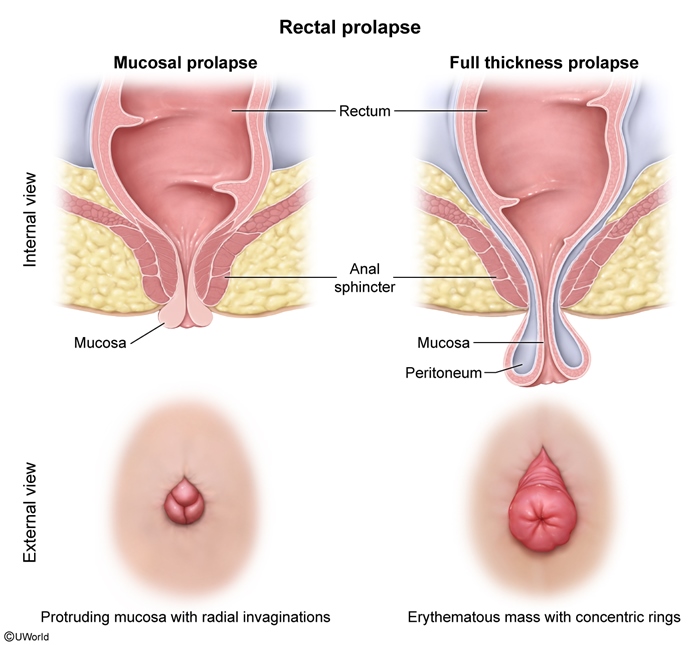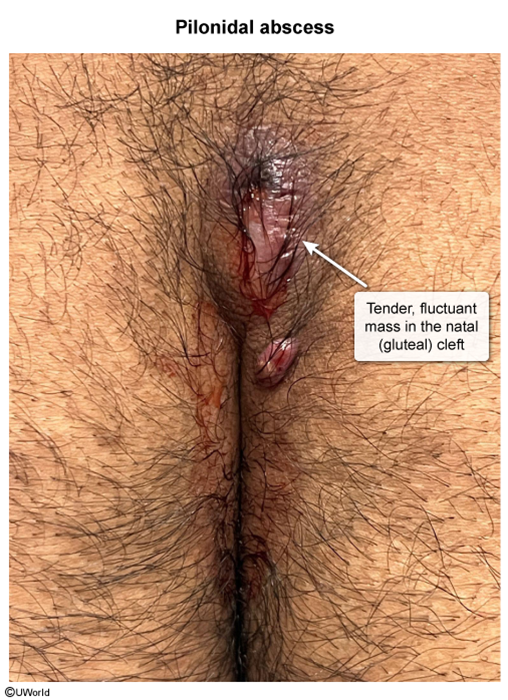Hemorrhoids
Article Sections
Introduction
Hemorrhoids are swollen vascular structures in the anal canal that can cause discomfort and bleeding. They are classified as internal and external hemorrhoids based on their anatomic location. Hemorrhoids are common and can significantly impact quality of life. By age 50, half of the population will have developed symptomatic hemorrhoids.
Pathophysiology
The anal canal is lined by 2 types of epithelium: columnar epithelium proximal to the dentate (pectinate) line and squamous epithelium distal to it. Anal cushions, composed of blood vessels (anal arteriovenous plexus), connective tissue, and smooth muscle, are normally present in the anal canal and help maintain continence.
Symptomatic hemorrhoids result from increased pressure within the anal arteriovenous plexus, leading to venous engorgement and inflammation of surrounding connective tissue. Contributing factors include the following:
Continue Learning with UWorld
Get the full Hemorrhoids article plus rich visuals, real-world cases, and in-depth insights from medical experts, all available through the UWorld Medical Library.
Figures



Images
